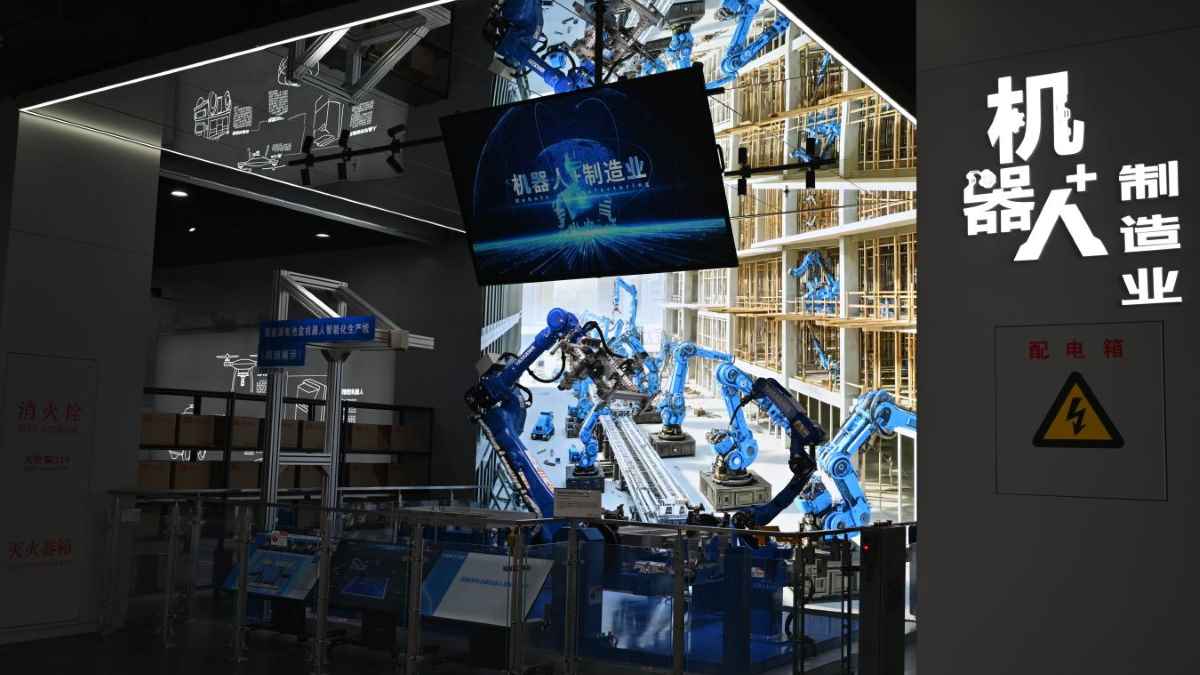BEIJING, CHINA – Media OutReach Newswire – 26 August 2024 – The first comprehensive robot exhibition center in Beijing, “Robot World,” has established a permanent exhibition hall. The National Robot Testing and Evaluation Center (Headquarters) Beijing Evaluation Center provides authoritative domestic and world-class testing and certification services. The Beijing Embodied Intelligence Robot Innovation Center focuses on solving common industry challenges in the development of key embodied intelligence robot technologies and ecosystem construction. The Beijing Artificial Intelligence Data Training Base helps build the “strongest brain.”
In Beijing E-Town, also known as the Beijing Economic-Technological Development Area (BDA), the ‘upstream and downstream’ sectors of the robotics industry have become ‘neighbors,’ fostering closer collaboration and integration. From attracting industry chain enterprises and building industrial spaces to providing computational support and large model training, Beijing E-Town is accelerating the construction of an integrated and interconnected robotics industry ecosystem.
Robot World showcases the application scenarios of handling robots and arc welding robots in the automotive manufacturing field
On the morning of August 21, during the opening ceremony of the World Robot Conference 2024, Beijing Robot World (referred to as Robot World) officially opened in Beijing E-Town, located at Courtyard 3, Jinghai 5th Road, Beijing Robot Industry Park.
In Robot World, a set of futuristic robot application scenarios is presented: In the automotive manufacturing field, handling robots and arc welding robots have become “skilled workers” on the production lines of complete vehicles and parts, working seamlessly in all processes such as welding, body arc welding, roof sidewall handling, painting, and stamping. In the trade and logistics sector, logistics robots have achieved automation in tasks such as shelf-to-person, bin-to-person, robotic sorting, and intelligent robotic logistics warehousing. In the healthcare sector, surgical robots equipped with high-definition stereoscopic vision systems, microsurgery instruments, intelligent surgical forceps, and fiber optic connectors provide doctors with a clearer view and more precise operation during surgery. In the commercial community services sector, the nation’s first certified AI catering robot has achieved the fully automated process of making Chinese crepes, from ingredient preparation to customized final products based on taste preferences.
At the National Robot Testing and Evaluation Center (Headquarters) Beijing Evaluation Center, a staff member demonstrates an upper limb testing system for humanoid robots in the interaction laboratory
A representative from Beijing E-Town Robotics Technology Industry Development Co., Ltd. introduced that the exhibition hall features nine major “robot+” scenarios, including robot + manufacturing, robot + healthcare, robot + artificial intelligence, and more. The goal is to promote production through exhibitions, inspire enterprise development strategies, and create a platform that connects platforms, industries, enterprises, and talents. For example, after the World Robot Conference, the exhibition hall will house select exhibits and provide continuous, free displays of new products and technologies for enterprises. Additionally, it will offer presentation spaces and roadshow services for robot companies to launch new products.
Moreover, within the 250,000-square-meter Beijing Robot Industry Park, a leading domestic robot testing and inspection technology platform—the National Robot Testing and Evaluation Center (Headquarters) Beijing Evaluation Center (referred to as the Evaluation Center)—has also been established. Equipped with authoritative domestic and world-class testing facilities, the center provides testing and certification services for the entire industry chain, including components, modules, complete machines, and integrated applications, for industrial, service, and special robots.
A representative from the Beijing Embodied Intelligence Robot Innovation Center (referred to as the Innovation Center) told reporters, “As the industry rapidly develops, testing and certification in technical areas such as electromagnetic compatibility, safety, reliability, and intelligence have become industry necessities. The proximity of the Evaluation Center allows us to effectively save time on testing and certification, shortening the research and development testing cycle.”
Turning our attention outdoors, the general humanoid robot platform “Tiangong,” independently developed by the Beijing Embodied Intelligence Robot Innovation Center, is navigating a dedicated robot path, occasionally tackling challenging terrains like grass and slopes. As the first provincial-level innovation center for embodied intelligent robots in China, the Innovation Center focuses on developing key common technologies and ecosystem construction for embodied intelligent robots. It is committed to tackling the core tasks of “Tiangong” and “Kaiwu,” aiming to become a leading organizer of resources, a promoter of industrial development, and a facilitator of practical applications in the embodied intelligence field. “Our goal is to address common issues in the humanoid robot industry and drive overall industrial development,” stated Xiong Youjun, General Manager of the Innovation Center.
In fact, it’s not just the Innovation Center that has gathered here; full-assembly manufacturing enterprises like the UBTECH humanoid robot headquarters and key component companies like Chietcom and Tsino-Dynatron have also joined. Furthermore, to accelerate the concentration of the robotics industry, promote technological exchange, and facilitate the transformation of innovative achievements, the Beijing Robot Industry Park established a Robotics Industry Incubator in April this year. This incubator provides services such as entrepreneurial guidance, project roadshows, investment and financing, achievement transformation, intellectual property, and policy consultation for start-ups and growing enterprises in the upstream and downstream sectors of robotics. Currently, four robotics companies—Lingzu Times, NextVPU, Ruiqu Technology, and DexForce—have signed up to join.
At the Tongming Lake National Information Technology Application Innovation Park, located 4 kilometers from the Beijing Robot Industry Park, it has been reported that Beijing E-Town is building a comprehensive AI city, with the first batch of ten benchmark application scenarios, including “AI + humanoid robots.” Here, Beijing E-Town’s largest and nationally leading public AI computing power platform has already activated 3000P of high-performance computing power. Throughout Beijing E-Town, 5000P of high-performance intelligent computing power has been deployed, with a planned computing power scale exceeding 10,000P. The Beijing Artificial Intelligence Data Training Base serves as a training ground for companies, helping large models develop the “strongest brains” and continuously advancing data aggregation in related fields to unlock the value of data.
“We have currently innovated in constructing a ‘data security physical space’ and ‘a highly efficient, interconnected data optical network,’ developed a ‘trustworthy data infrastructure,’ and formulated ‘an operational management mechanism.’ Through management mechanisms and technical means, we have built a secure environment for data circulation and model training,” a representative from the Training Base explained.
By leveraging the convenience of exhibition exchanges and testing and evaluation, bringing together leading companies like the Beijing Embodied Intelligence Robot Innovation Center, UBTECH Robotics, and Longwood Valley MedTech, and benefiting from the support of specialized incubation carriers and key component companies, along with the vast application scenarios in intelligent manufacturing factories in industries such as automotive and new displays, the Beijing Economic-Technological Development Area official introduced, “In Beijing E-Town, the ‘upstream and downstream’ of the robotics industry have become ‘neighbors.’ Robotics companies can find innovative partners for research and development, manufacturing, training, testing, and even application stages without leaving the district.”
Moving forward, Beijing E-Town will accelerate the construction of an integrated and interconnected robotics industry ecosystem, continually enhancing soft and hard collaborative service support for industrial development, closely adhering to the comprehensive development needs of the robotics industry supply chain, and refining the allocation of resources such as data, platforms, services, and capital, while continually fostering an environment that attracts talent from near and far, ultimately creating an “industry ecosystem rainforest” characterized by “resource coordination, element aggregation, and innovation collaboration.”


